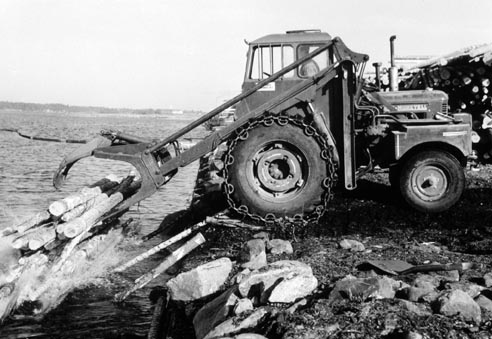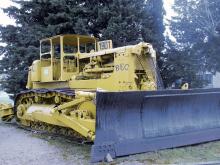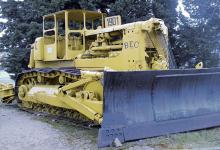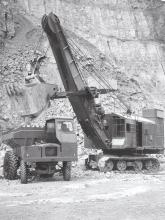
The wheeled loader has become a key tool for the quarry sector, whether for loading haul trucks or in-pit crushers and for stocking duties. Mike Woof looks at the development
Highly versatile and mobile, the wheeled loader has become an important machine in the quarrying industry.
The first wheeled loaders were developed in the 1920s and were based on agricultural tractors, with these machines being used mainly on construction sites or for stocking and handling materials. Many of these crudely converted tractors ran on solid tyres and, coupled with the clumsy cable-operated mechanical loader arms, were uncomfortable, unstable and potentially dangerous to operate.
In the 1930s manufacturers began to develop proper wheeled loaders, although these still used mechanical means to lift the loader arms as the hydraulics of the time were unreliable and prone to leaks. One of the first machines designed specifically as a wheeled loader was the American made Hough HS, which appeared in 1939 and this tiny machine was mainly used in construction jobs.
The technological advances made in military equipment during WWII resulted in more reliable hydraulic systems, which appeared on a new generation of wheeled loaders introduced soon after the war ended. As time progressed firms developed larger machines and their versatility and mobility encouraged quarrying firms to introduce them first for rehandling and then for loading purposes.
Hough once again led the field with its petrol driven HM model of 1947 featuring actuation of its loader arms and bucket and having the distinction of being the first wheeled loader with four wheel drive. The Wagner brothers were first to build an articulated wheeled loader with their Scoopmobile Model LD-5 first rolling out of the plant at Portland in Oregon in 1953.
Early wheeled loaders did suffer safety issues though, with a major problem being the location of the pivot arms behind the operator as this impaired visibility and there was a risk of the operator being caught in between the loader arms and the hydraulic rams. Following discussions with the US National Safety Council manufacturers reconfigured their designs and Hough again was amongst the first to introduce a new model with the loader arm pivot point in front of the operator position.
Many of the early names from the wheeled loader sector, such as
But their legacy continues - Hough was merged into International Harvester, which later became Dresser and was finally bought up by











